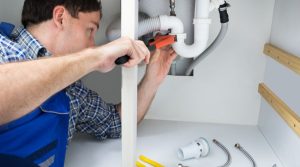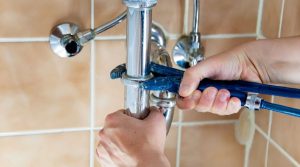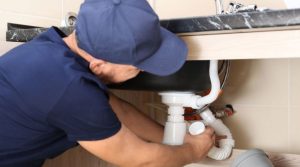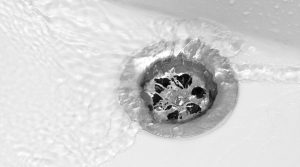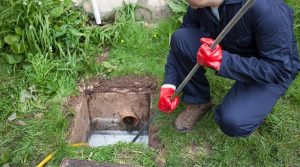Key Takeaways:
- Regular water heater maintenance ensures efficiency and prolongs lifespan.
- Flushing your water heater removes sediment buildup.
- Lowering the temperature by 10 degrees can save on energy costs.
- Checking the Test and Pressure Relief (TPR) Valve ensures safety.
- Professional assistance is available for complex issues.
Essential DIY Water Heater Maintenance Tips for Fall
It’s officially fall! With cooler mornings and shorter days, many people start using their water heaters more frequently. To ensure your water heater operates efficiently throughout the season, our team of expert plumbers has compiled a list of essential DIY water heater maintenance tips. Before you get wrapped up in Halloween decorations and costume planning, take a moment to check if your water heater is ready for the season.
1. Drain and Flush the Water Heater Tank
If you have a traditional tank-style water heater, draining and flushing the tank annually is crucial for optimal performance. Sediment and mineral buildup can reduce efficiency, increase energy costs, and shorten the lifespan of the heater. Fall is an ideal time for this maintenance task since water heater usage generally increases as temperatures drop.
How to Drain and Flush Your Water Heater:
- Turn off the power supply to the water heater.
- Allow the water in the tank to cool before proceeding.
- Attach a hose to the drain valve on the side of the tank.
- Place the other end of the hose into a sink or bucket to collect water.
- Open a few hot water faucets around your home to aid in draining.
- Open the release valve to allow the water to drain completely.
- Once the tank is empty, close the release valve, remove the hose, turn off all faucets, and restore the power and cold water supply to the heater.
This process helps remove sediment and mineral deposits that accumulate over time, improving your water heater’s performance.
2. Lower the Temperature
Lowering the temperature on your water heater by about 10 degrees in the fall may seem counterintuitive, but it can significantly reduce energy costs. Since people tend to take longer, hotter showers during colder months, this small adjustment can help prevent excessive energy use.
Ideal Water Heater Temperature Settings:
- Keep the temperature between 120°F and 140°F.
- Anything below 120°F increases the risk of bacteria growth in the tank.
- Anything above 140°F raises the risk of burns or scalding.
Most people won’t even notice a 10-degree reduction, but they will see savings on their energy bills!
3. Inspect the Test and Pressure Relief Valve (TPR Valve)
The Test and Pressure Relief (TPR) Valve is a critical safety component of your water heater. It prevents the unit from over-pressurizing and potentially exploding.
How to Test Your TPR Valve:
- Locate the valve near the base of the water heater.
- Lift the valve’s lever slightly and listen for the sound of running water.
- If water flows through the attached discharge pipe, the valve is working correctly.
- If you do not hear or feel water flowing, shut off the power to the heater immediately and contact a professional plumber.
If your TPR valve is faulty, it must be replaced immediately to avoid serious safety hazards.
4. Insulate Your Water Heater and Pipes
As the temperatures drop, insulating your water heater and pipes can help maintain hot water efficiency and reduce heat loss.
Benefits of Insulation:
- Reduces standby heat loss by 25-45%.
- Saves 7-16% on water heating costs.
- Prevents pipes from freezing and bursting in colder months.
To insulate your water heater, use a water heater blanket designed for your specific model. Pipe insulation sleeves can be wrapped around exposed pipes to prevent heat loss and improve efficiency.
5. Schedule a Professional Inspection
While DIY maintenance helps extend the life of your water heater, an annual professional inspection ensures optimal performance. A licensed plumber can identify underlying issues, check for leaks, and ensure all components function correctly.
Signs You Need Professional Assistance:
- Discolored or rusty water.
- Unusual noises, such as popping or rumbling.
- Water leaks around the base of the heater.
- Inconsistent water temperature or low hot water supply.
If you experience any of these issues, contact a professional plumber immediately.
Frequently Asked Questions (FAQ)
Q: How often should I flush my water heater?
A: It’s recommended to flush your water heater once a year to remove sediment buildup and maintain efficiency.
Q: Can I set my water heater temperature below 120°F to save more energy?
A: No, setting it below 120°F increases the risk of bacteria growth, such as Legionella, which can cause health issues.
Q: How can I tell if my water heater is failing?
A: Common signs of a failing water heater include rusty water, insufficient hot water, strange noises, and water leaks.
Q: What’s the lifespan of a water heater?
A: Traditional tank water heaters last 8-12 years, while tankless models can last 15-20 years with proper maintenance.
Q: Should I turn off my water heater when I go on vacation?
A: Yes, setting your water heater to vacation mode or turning it off can save energy while you’re away.
Q: When should I replace my water heater instead of repairing it?
A: If your water heater is over 10 years old, has frequent breakdowns, or requires costly repairs, replacement may be the best option.
Get Expert Help with Your Water Heater
Even with regular DIY maintenance, water heaters can develop issues over time. If you’re experiencing problems or need professional assistance, BJC Plumbing is here to help. Our expert plumbers provide reliable water heater maintenance, repairs, and installations to keep your home comfortable throughout the colder months.
Contact BJC Plumbing today for expert water heater services and enjoy a worry-free fall and winter season!


